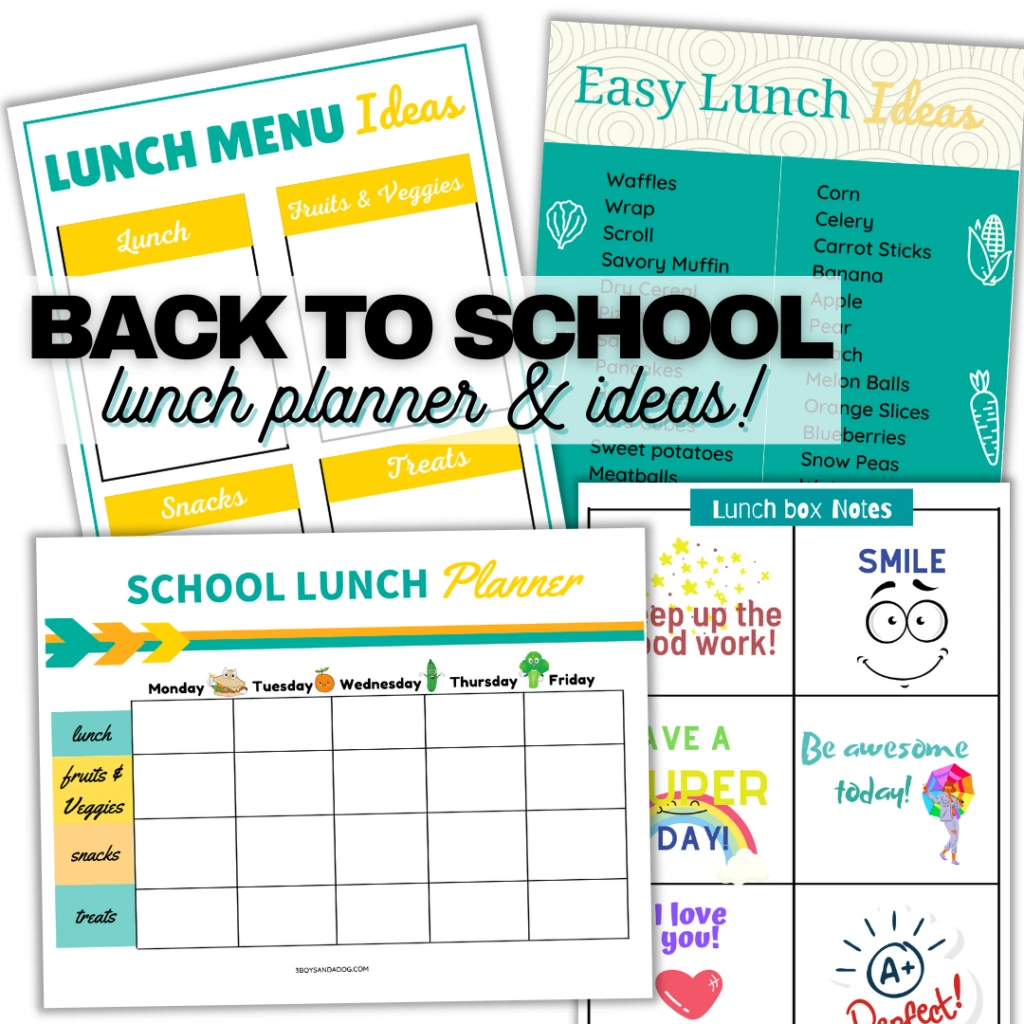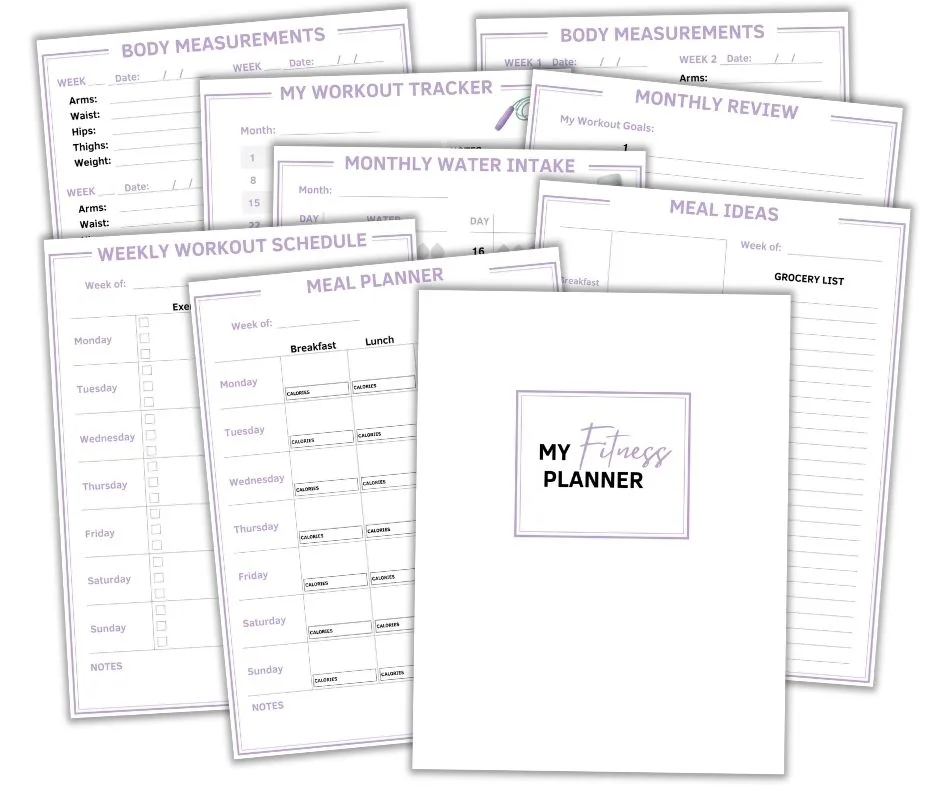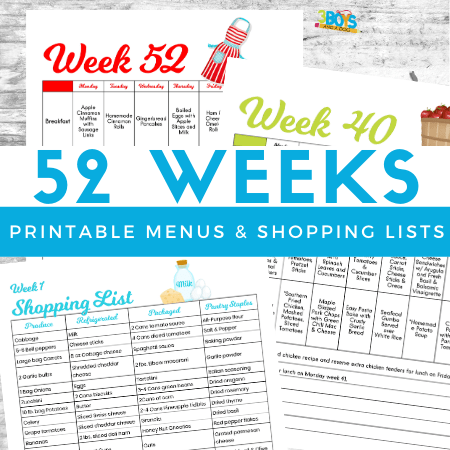Menu Plan Monday is a delightful weekly ritual that empowers you to conquer the chaos of meal planning by mapping out your ingredients and recipes for the upcoming week.
Meal planning is a great way to save time, reduce stress, and eat healthier. By taking a moment to plan your meals, you can avoid strikes and last-minute scrambles to figure out what’s for dinner. You’ll also have more time for other important weekly tasks—which is great!

Meal planning can reduce stress and anxiety by eliminating the indecision that often arises when hunger strikes you. With a well-thought-out meal plan, you can approach each day with a sense of calm and readiness.
Planning your meals also allows you to make thoughtful choices about your food intake. This means you can enjoy nutritious, balanced meals that support your overall well-being.
By incorporating various healthy foods into your meal plan, you can ensure you get all the nutrients your body needs to function at its best.
Getting Started with Menu Plan Monday
To kickstart your Menu Plan Monday journey and streamline your meal planning process, follow these simple tips:
- Set Aside Dedicated Time: Allocate a specific time slot each week to plan your meals for the upcoming week. Consistency is critical to success.
- Choose Your Planning Method: Decide whether you prefer a digital approach using apps, websites, or the traditional pen-and-paper method. Select the method that works best for you.
- Check Your Pantry Inventory: Before crafting your meal plan, take stock of the ingredients in your pantry and fridge. This step helps prevent overbuying and minimizes food waste.
Following these tips can make your meal-planning process more efficient and effective.
Advantages of Implementing Menu Plan Monday
If you’re wondering how this type of planning can be advantageous, here are a few reasons it’s worth it!
- Time-Saving: Planning meals in advance saves time during the week and reduces last-minute decision-making stress.
- Stress Reduction: Knowing what you’ll be cooking ahead of time helps alleviate daily mealtime stress and uncertainty.
- Healthier Eating: Meal planning allows for thoughtful, balanced meal choices, which leads to better nutrition and more nutritious eating habits.
- Cost-Efficiency: By planning meals and grocery shopping strategically, you can avoid overspending and reduce food waste.
- Variety and Creativity: Menu planning encourages culinary exploration, introduces variety into your meals, and sparks creativity in the kitchen.
Crafting Your Weekly Menu
Here’s a step-by-step guide to help you select recipes that align with your schedule, dietary preferences, and budget while keeping your meals varied and nutritious:
Step-by-Step Guide: Choosing Recipes for Menu Plan Monday
Following these steps, you’ll curate a collection of recipes catering to your lifestyle, preferences, and budget while fostering a diverse and satisfying menu plan.
- Assess Your Schedule: Consider the week ahead and identify busy days when you may need quick and easy meals versus when you have more time to experiment in the kitchen.
- Define Your Dietary Preferences: Consider any dietary restrictions or preferences you have, such as vegetarian, vegan, gluten-free, or specific ingredient aversions.
- Set Your Budget: Determine a grocery budget and select recipes that fit within your financial constraints. Look for cost-effective ingredients and meal options.
- Browse Recipe Sources: Explore cookbooks, food blogs, recipe websites, and apps to find a diverse range of recipes that appeal to your taste buds and nutritional needs.
- Create a Meal Calendar: Draft a weekly meal calendar incorporating a mix of cuisines, cooking methods, and flavors to keep your meals exciting and well-rounded.
- Include Variety: To achieve a balanced diet, ensure your meal plan includes a mix of proteins, vegetables, grains, and fruits. Experiment with different food groups to prevent monotony.
- Prepare a Shopping List: Based on your chosen recipes, compile a detailed shopping list, cross-referencing it with what you already have in your pantry.
- Prep Ahead: If time allows, consider prepping some ingredients in advance to streamline cooking during the week. This can save valuable time on busy days.
Beat Bobby Flay: Conquer the Kitchen with 100+ Battle-Tested Recipes: A CookbookXi’an Famous Foods: The Cuisine of Western China, from New York’s Favorite Noodle Shop
Taste: My Life Through Food
The 50 States: Explore the U.S.A. with 50 fact-filled maps!
Organizing Your Shopping List
Here are some insights and tips on creating an organized shopping list corresponding to your menu plan to enhance your grocery shopping experience.
Creating an Organized Shopping List for Your Menu Plan
- Utilize Grocery List Templates: Start using a grocery list template to structure your list effectively and save time at the store. Organize your items based on categories or aisles for easy navigation.
- Align with Your Menu Plan: Coordinate your shopping list with your weekly meal plan. List ingredients according to the recipes you’ve selected to ensure you have everything you need for your meals.
- Categorize by Food Types: Group items on your list by food types, such as fruits, vegetables, proteins, grains, dairy, etc. This categorization method ensures a smoother and more efficient shopping trip as you move through the store.
- Organize by Aisles: If possible, organize your list in the order of the aisles in your regular grocery store. You can move through the store seamlessly without backtracking for missed items.
- Consider Digital Tools: Explore grocery list apps that categorize items, check off purchased goods, and even sync your list across devices for convenience.
These strategies can help you streamline your grocery shopping process, stay organized, and ensure you have all the ingredients you need for planned meals.
Staying Flexible and Creative
Use these strategies to adapt your menu plan when unexpected events alter your schedule:
Strategies for Adapting Your Menu Plan
- Stay Flexible: Embrace flexibility in your meal planning to accommodate sudden changes in your schedule. Have backup meal options that are quick and easy to prepare.
- Utilize Leftovers Creatively: Transform leftovers into new meals to reduce food waste and add variety to your menu. Get creative with leftovers by repurposing them in innovative ways.
- Plan for Variety: To keep things interesting, incorporate a mix of flavors, ingredients, and cuisines into your meal plan. Experiment with new recipes and ingredients to enhance meal diversity.
- Batch Cooking: Consider batch cooking certain meals or components in advance to save time on hectic days. This allows you to have pre-prepared items ready to go when needed.
- Freeze Extras: If you have extra portions, freeze them for future use. This practice ensures you always have a backup meal option when unexpected events arise.
These strategies allow you to easily navigate unforeseen schedule changes and maintain a varied and exciting menu plan despite disruptions.

Embrace adaptability in your menu planning to navigate unexpected events and maintain culinary creativity in your kitchen!
Menu Plan Monday offers many benefits, from saving time and reducing stress to promoting healthier eating habits and fostering culinary creativity.
Implementing a structured meal planning routine can help individuals streamline grocery shopping, optimize cooking time, and enjoy a nutritious menu throughout the week.
Shop My Printables
These printables are great for meal planning and organizing! Simply click the image to check out my shop products!



Let’s continue to embrace Menu Plan Monday as a weekly ritual and a lifestyle that nurtures mindful eating, culinary exploration, and shared experiences within a community dedicated to the joys of organized meal planning.
Together, we can savor the flavors of success, navigate the twists of unexpected events, and revel in the delicious journey of Menu Plan Monday.














Dianna
Wednesday 19th of September 2012
I know just what you mean about the receipts, we are doing the same thing. We have decided against the additional room being added to the kitchen, just way too much involved in moving that wall. However, we have replaced carpet in two rooms. Still have the master bedroom to carpet, but we are waiting until we redo the master bath before new flooring. All in all, we have two bathrooms, moving the laundry facilities, turning old laundry room in to a walk in pantry, then a major remodel of the kitchen. Gutting it, moving a couple of appliances to different spots, then all new cabinets and counters.